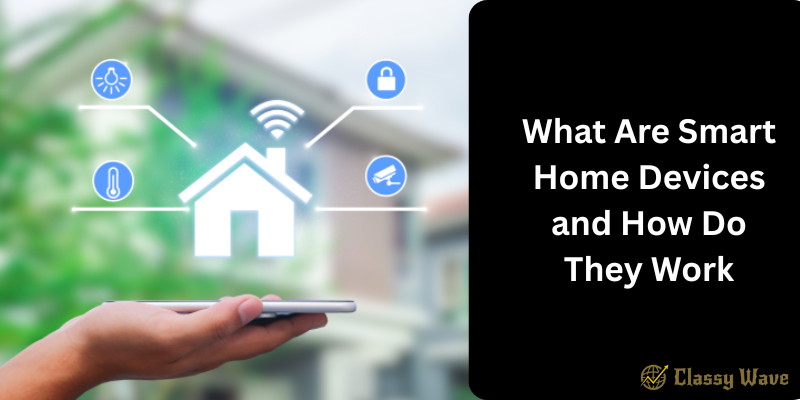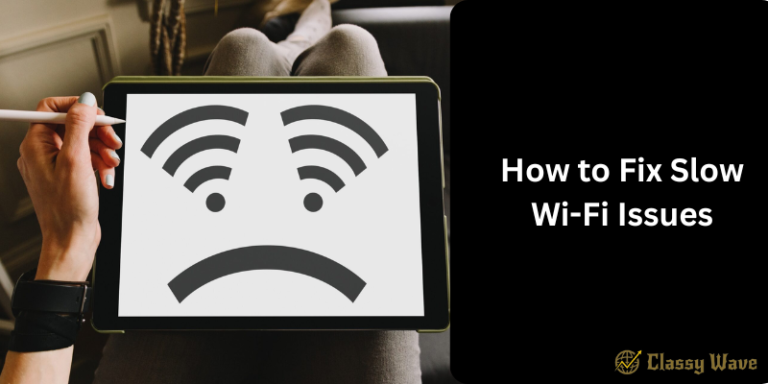What Are Smart Home Devices and How Do They Work | Classy Wave
Smart home devices have become a symbol of modern living — convenient, energy-efficient, and incredibly innovative. But what exactly are they, and how do they work behind the scenes to make your life easier? Let’s dive deep into the world of smart homes and understand how they’re changing everyday life.
What Are Smart Home Devices?
Smart home devices are electronic gadgets designed to connect with the internet or other devices in your home to make tasks easier and more efficient. These include things like smart lights, thermostats, speakers, cameras, locks, and even appliances that can be controlled remotely via your smartphone, tablet, or voice assistants like Alexa, Google Assistant, or Siri.
Simply put, these devices use Wi-Fi, Bluetooth, or other wireless technologies to communicate with each other and respond to your commands—whether you’re home or away.
How Do Smart Home Devices Work?
At their core, smart home devices work using three main elements:
1. Connectivity
Most smart home gadgets connect to your home’s Wi-Fi network. This allows you to control them through mobile apps or voice commands. Some also use Zigbee, Z-Wave, or Bluetooth for connectivity.
2. Automation
Smart devices can follow programmed schedules or react to specific triggers. For example, you can schedule your coffee maker to start brewing at 7 AM or have your lights turn off automatically when you leave home.
3. Integration
The magic of smart homes comes from integration. Devices can communicate with each other using platforms like Amazon Alexa, Google Home, or Apple HomeKit, allowing you to manage multiple devices from a single hub.
Popular Types of Smart Home Devices
1. Smart Speakers
Devices like Amazon Echo or Google Nest let you control your home using just your voice. They can play music, answer questions, set reminders, and manage other smart devices.
2. Smart Lighting
Smart bulbs and switches let you adjust brightness, change colors, and set timers—all through your phone or voice command.
3. Smart Thermostats
These devices, like Nest Thermostat, learn your daily routines and automatically adjust temperatures to save energy and keep your home comfortable.
4. Smart Security Systems
From cameras to doorbell monitors, smart security devices allow you to keep an eye on your home from anywhere. They can alert you in real time if they detect motion or unexpected activity.
5. Smart Locks
Smart locks let you unlock your doors using a code or your smartphone instead of a physical key—perfect for families or guests.
6. Smart Appliances
Think of refrigerators that track groceries, washing machines that start remotely, and ovens that you can preheat while driving home. Convenience at its best!
Benefits of Smart Home Devices
1. Convenience
No need to manually switch off lights or adjust thermostats—just say a command or use your phone.
2. Energy Efficiency
Smart thermostats and lights help you reduce unnecessary energy usage, cutting down your electricity bills.
3. Security
With real-time alerts, cameras, and smart locks, you can monitor your home from anywhere, offering peace of mind.
4. Customization
You can personalize how your home functions based on your preferences and daily routines.
5. Accessibility
Smart homes make life easier for elderly or differently-abled individuals by automating basic household functions.
Are Smart Homes Safe?
While smart homes offer great convenience, they do raise privacy and security concerns. To stay safe:
- Always use strong passwords for your devices.
- Keep your software and firmware updated.
- Connect devices to a secure network.
These steps can significantly reduce hacking risks and ensure smooth operation.
How to Get Started with Smart Home Devices
If you’re new to smart homes, here’s how to start:
- Pick a Smart Hub — Choose a main assistant like Alexa, Google Home, or Apple HomeKit.
- Start Small — Begin with easy devices like smart bulbs or plugs.
- Expand Gradually — Add thermostats, cameras, and other devices as you get comfortable.
- Automate Routines — Set up schedules that match your lifestyle.
Future of Smart Home Technology
The future looks exciting. With AI integration, 5G networks, and machine learning, smart homes are becoming more intuitive. Soon, your home might predict your needs before you even say a word — like adjusting the lights when it’s cloudy or starting your coffee when your alarm rings.
Conclusion
Smart home devices are transforming how we live — blending comfort, convenience, and technology into one seamless experience. Whether you start with a single device or go full smart home, these gadgets promise to make daily life simpler, safer, and more efficient.







